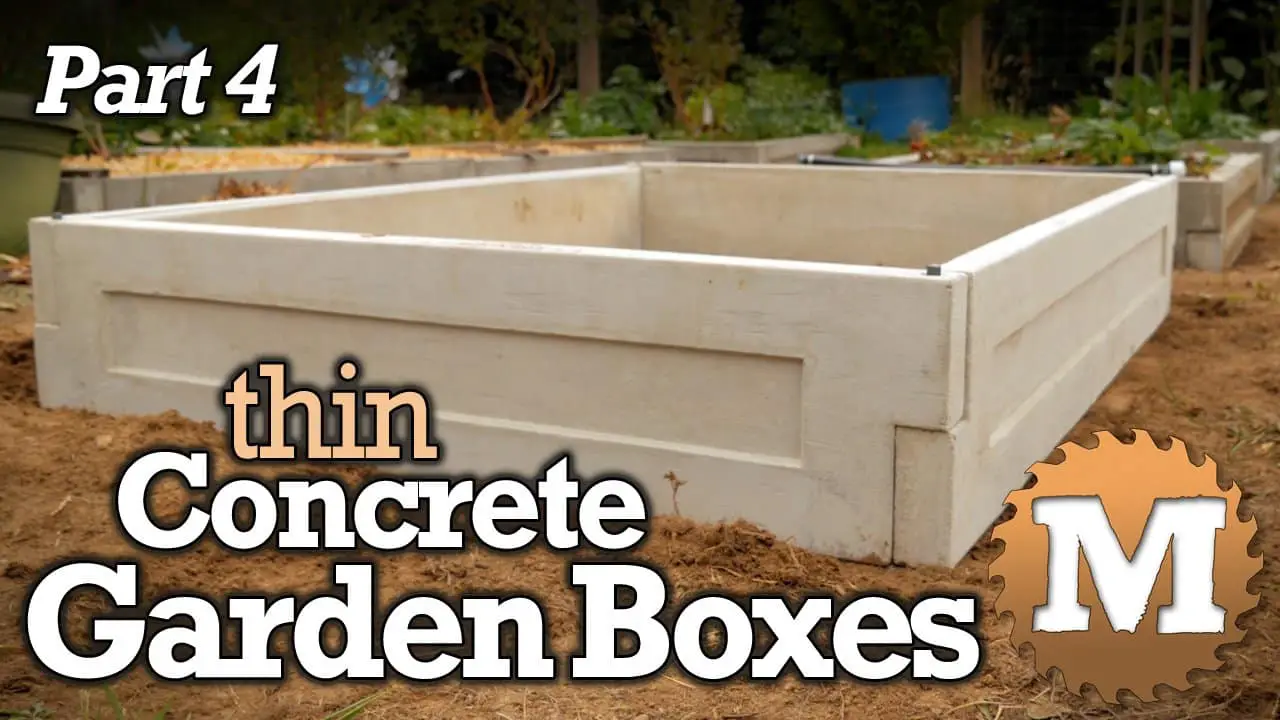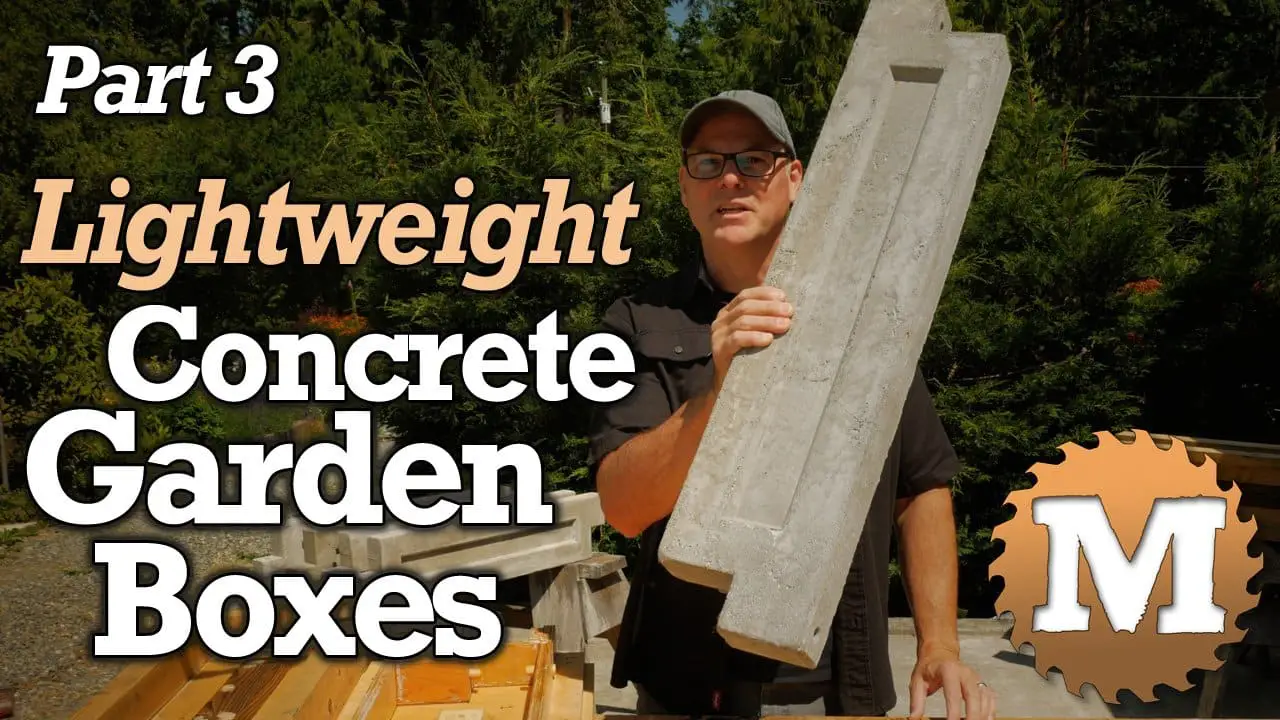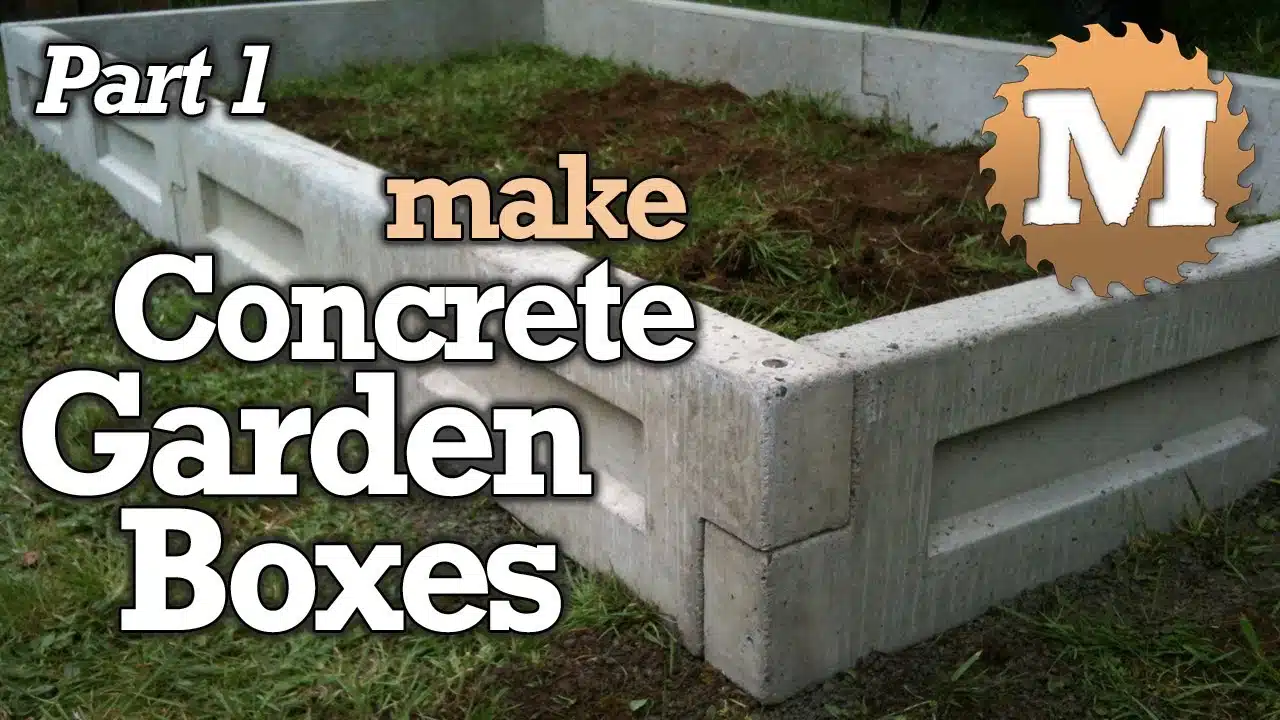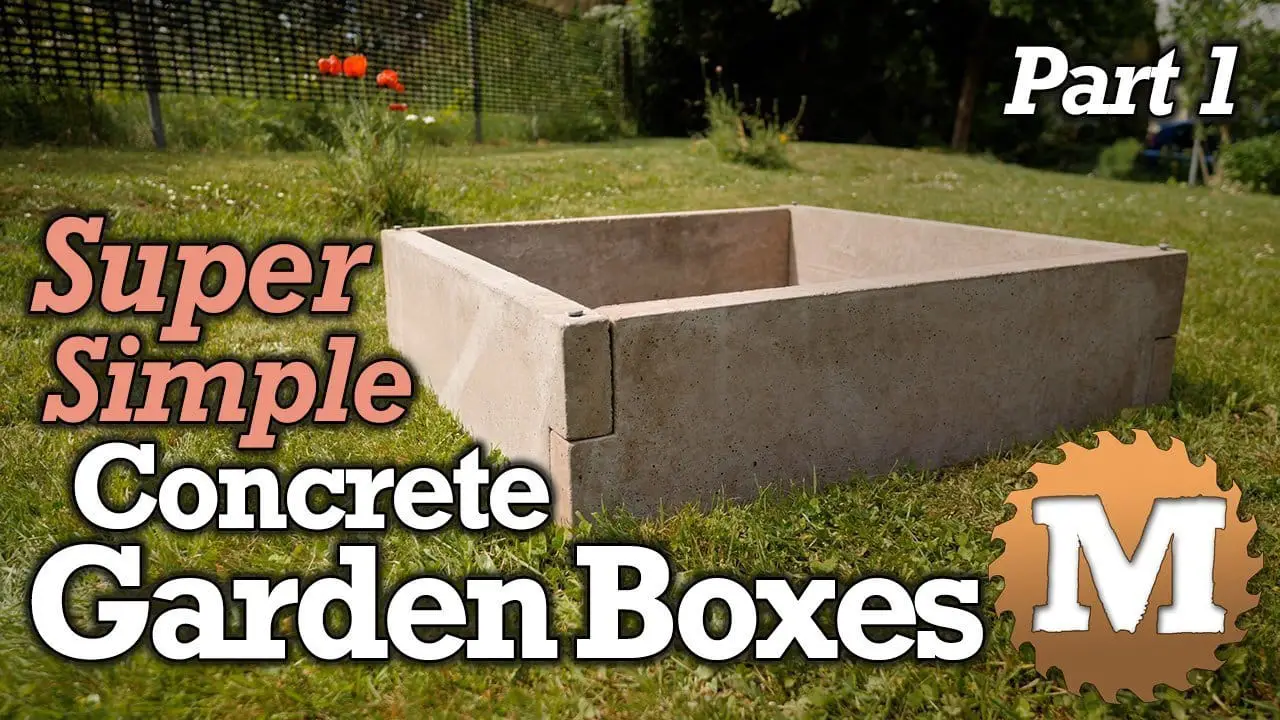Strip the Forms
The concrete is covered with plastic and left for a few days.
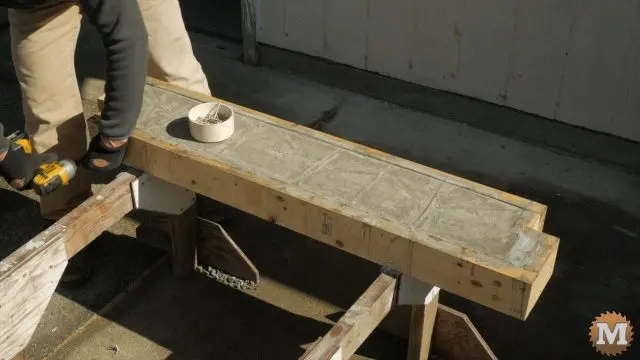
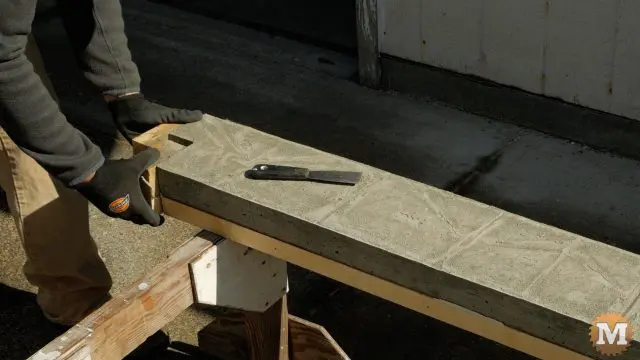
Now the screws can be removed and the sides and ends can be gently pried free.
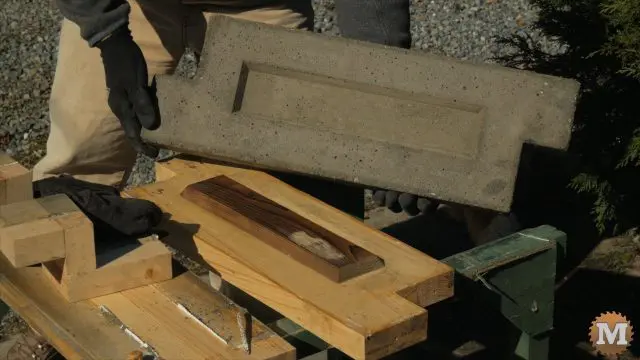
The newly cast panels should be kept wet and allowed to cure for about 4 weeks. Your concrete raised garden beds will be that much stronger and durable the longer you cure them.
The latex caulk can be easily scraped off with a putty knife and the form parts wiped clean with a rag.
Make the Concrete Raised Garden Beds
I cut rebar into one foot lengths with a cutoff blade in my angle grinder. I clamp the long length of rebar across sawhorses.
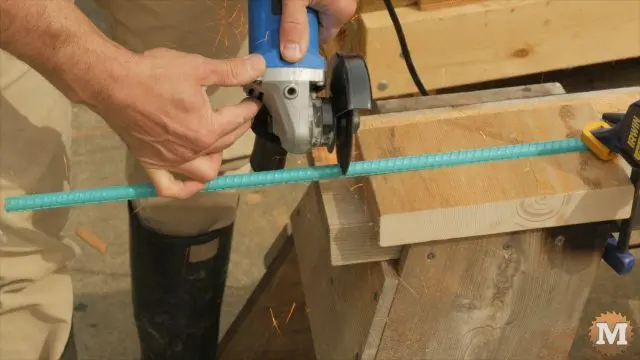
A hacksaw will work but it takes longer. Some building supply stores sell rebar pre-cut in shorter lengths as well.
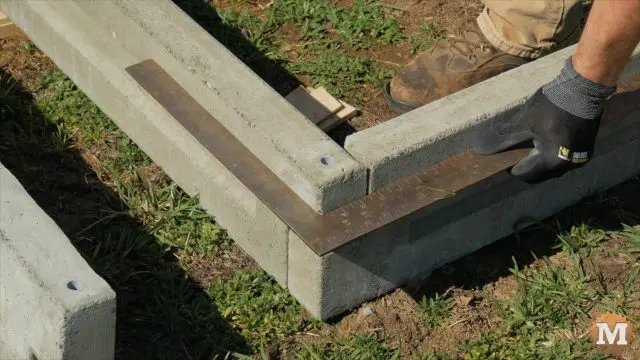
I level a spot in my garden and overlap two panels. I check the corners for square then drive in the rebar thru the corner and into the ground to secure them.
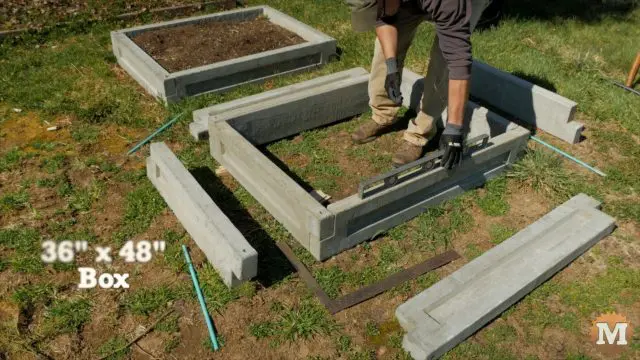
I repeat this on each corner to complete the Garden Box.
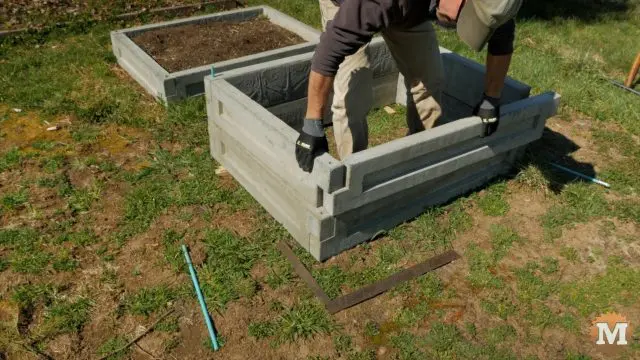
For deeper concrete raised garden beds you can stack and alternate the panels if you like. You will need longer rebar for this.
Here’s a few different size garden boxes you can make using these three panel lengths.
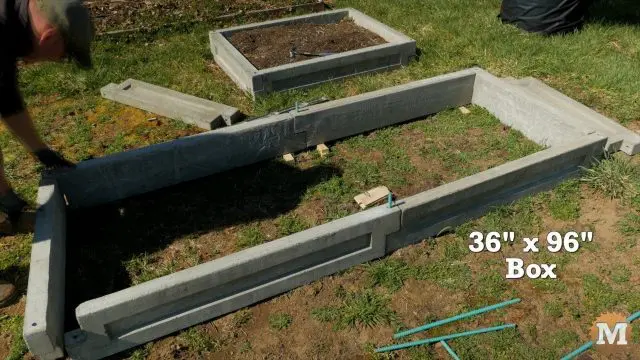
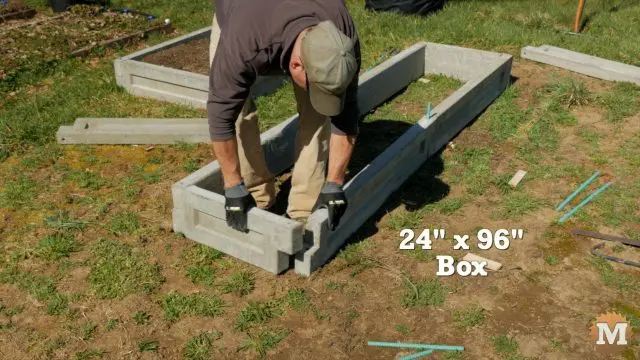
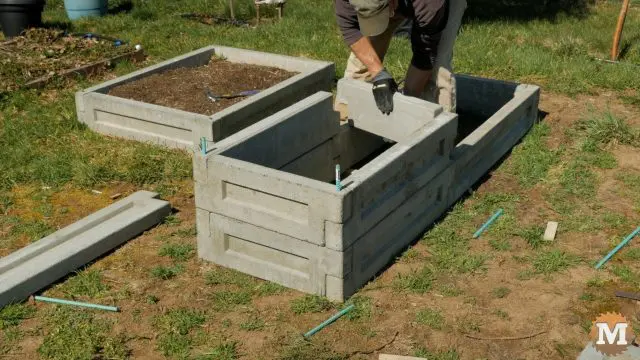
I would normally lay out and level the ground before setting the panels in place. But, for this demo, I used some wood blocks instead.
We put a layer of cardboard down over the grass then fill the box with compost and soil before planting.
(Disclaimer: As an Amazon Associate I earn from qualifying purchases. Thank you for helping to support my content this way. )
Q & A – from the first video
So, in this section I’d like to answer some questions from the previous video and add some thoughts on casting these concrete panels.
What about making the forms from melamine?
I happen to like working with plywood so that’s the material I chose. But instead of plywood, these forms could be made using melamine coated board. That’s a really good choice for small form work and melamine doesn’t require any finishing. I don’t know about the longevity of particle board near moisture, but if you were only doing a few castings then it should work just fine.
Can you make the panels lighter?
Many people asked about using light weight concrete and other alternative materials to make the panels lighter. For me, the weight isn’t a big concern but, enough people have asked about it that I’ve decided to shoot another video covering just that. So look for that coming up soon. It seems that you have to sacrifice strength when you go to lightweight concrete, but it’s worth having a look at, so I’ll see what I can come up with. Be sure to hit the subscribe button and the bell to be notified when I post that.
Can you make the panels taller for deeper beds?
I decided on an 8 inch height for the panel as it seems that you can grow just about anything in 8 inches of soil. A taller panel might get a bit too heavy to handle easily. However, these panels can be stacked to create deeper beds. These concrete raised garden beds are deep enough for our needs.
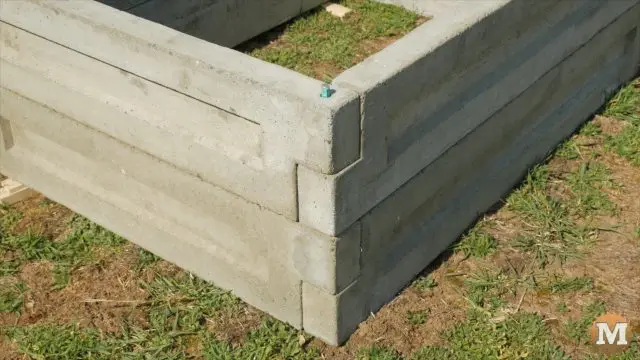
How will these panels do in the winter?
Another concern was the winter durability of the panels and how they might survive freeze and thaw cycles. The rebar that pins the corners together allows for a bit of movement for expansion and contraction. You could also use a thiner rod than this rebar for even more play at the connection. The pipe holes could also be filled or capped to prevent water from pooling inside.
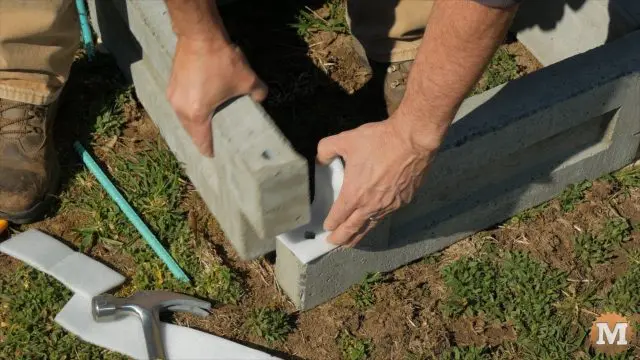
A thin flexible gasket could also be added between panels to keep out moisture and add some flexibility at the joint.
Can you move the concrete raised garden beds after the panels are set and linked together?
A washer could be welded to the top of the rebar to make it easier to remove if you ever wanted to disassemble the panels and move the bed.
There’s pro’s and con’s to both these designs.
The new framing lumber version has fewer parts and is easier, faster, and cheaper to build than my original plywood forms. And I have also found that it’s easier to remove the ends by gently rocking them. Plus, you can remove the base from the finished panel easier by tilting it up on its side.
The plywood forms give a better finish, should last longer, and have fewer (if any) knots. And plywood is not susceptible to the distortions of framing lumber. Framing lumber will have a greater tendency for warping, cupping, or twisting from moisture penetration, during the casting process. And, I’m finding it’s harder to source good quality, straight and true lumber these days. I try to be as accurate as possible when I build these forms. Doing so ensures I get a good fit in the final castings.
So I hope you have enjoyed this post, and thank you so much for reading. If I make any further improvements or changes I’ll post them here.
And, while you are here, please hit the Support Link to help us make more projects and videos like this. We really appreciate anything you can do to help us out!

